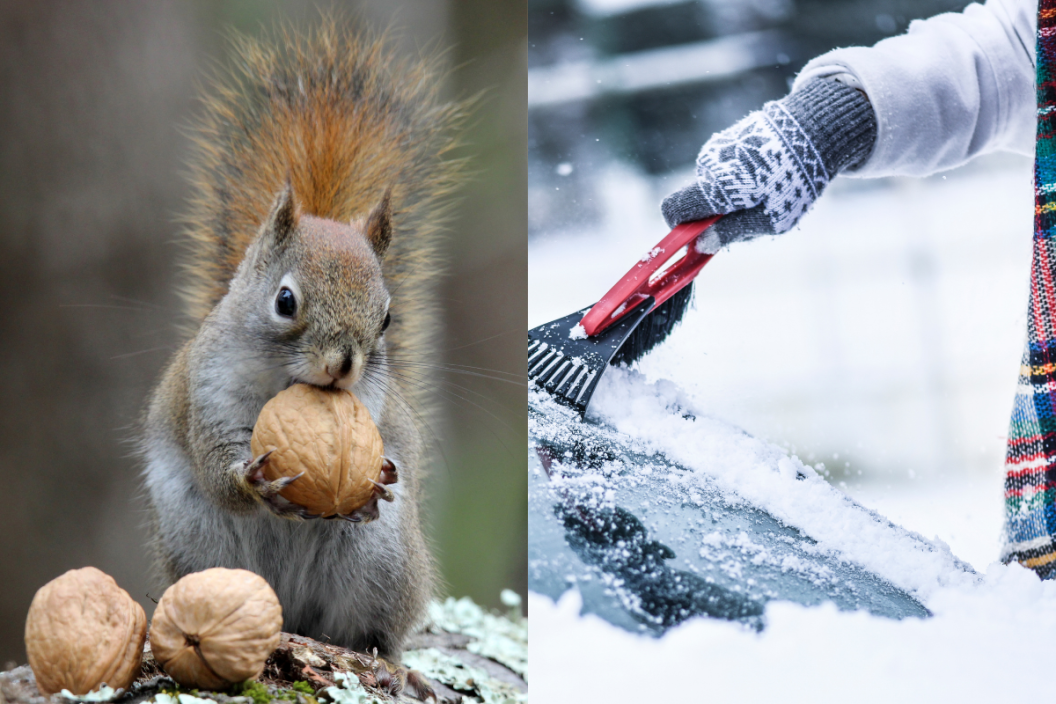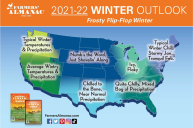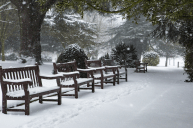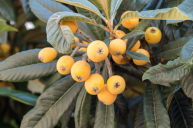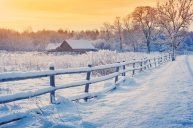When the leaves start falling and the temperatures drop, we begin wondering what kind of winter the universe has in store for us. Will there be big snowstorms with lots of snow, or will this be a mild one? The Old Farmer's Almanac always gives a report of the weather predictions and long-range forecasts based on meteorologists and solar science. However, another way to predict the coming winter is by using natural predictions of winter that have been around since the beginning of time.
Videos by Wide Open Country
Our ancestors didn't have the science and technology to look up the weather forecast, but they observed Mother Nature's signs to make predictions of the coming seasons. From animals to plants to clouds, there are many signs to pay attention to, often with rhyming proverbs to go along with them.
This weather folklore was passed down through generations of farmers, hunters and others living off the land. Although most aren't backed up by science, some have been found to have some amount of truth to them. Plus, they're a fun way to get in touch with the natural world!
Nature's Signs in Plants
https://www.instagram.com/p/CVJ80k7MKOA/
Plants have always been a good predictor of what's happening in the natural world, and our ancestors used them often when preparing for the upcoming winter. In general, plants growing thicker or harder outer skins points to a cold winter, since this will increase their chance of surviving the low temperatures. This is especially true for onions, apples, flower buds, nuts and corn husks.
Along with this, how the leaves fall can signal different weather forecasts. If the leaves fall early, a mild fall and winter are ahead. If they fall late, winter will likely be a cold one. If the leaves simply die on the branches in fall rather than falling, an extra harsh winter is coming.
If you notice abundant crops of acorns, hawthorn, rose hips, and other berries, a hard winter is coming. On the other hand, a large walnut crop signals a mild winter.
Nature's Signs in Animals
Animals are far more tuned into the natural world than humans, so their behavior is often indicative of weather patterns. Along with this, they often grow thicker coats and or more body fat to prepare for harsh weather conditions. Indigenous people watched the beaver to predict the winter weather, saying that the stronger the beaver lodge, the worse the coming winter would be.
"When you see a beaver carrying sticks in its mouth, it will be a hard winter—you better go south."
They also looked to skunks, squirrels, and chipmunks. A few signs of a hard winter with lots of snowfall to come are extra fat skunks, squirrels stashing their nuts higher up than normal, and an absence of squirrels in the fall.
"When squirrels early start to hoard, winter will pierce us like a sword."
Birds are another animal used as natural predictors. If a severe winter season is coming, it's believed that the birds will migrate early to get to warmer weather. If the turkeys grow especially thick feathers, a harsh winter is coming. Another belief is that wild turkeys will hide out in trees, refusing to come down, it it's about to snow.
"If the rooster moults before the hen, we'll have winter thick and thin. If the hen moults before the cock, we'll have winter hard as a rock."
Insects were also a good way to predict the coming winter forecast. Our ancestors watched where the bees built their hives, saying that if the bees build their hives in a protected spot like inside a barn, there'll be a severe winter. They also believed that the snow will be as high as the hornets nests.
My personal favorite natural prediction of winter is the adorable woolly bear caterpillar. It's said that the wider the caterpillar's brown band is, the milder the winter will be. Some also believe that the woolly worm's coat will be thicker before a harsh winter.
